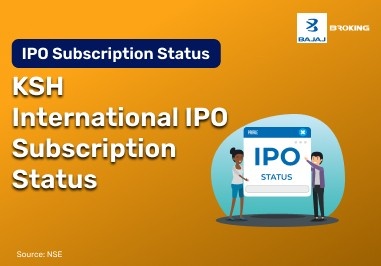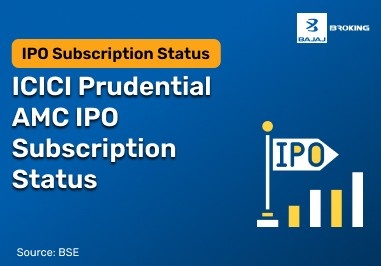About the State Bank of India
Discover the history, rationale, and strategic leadership that inform the State Bank of India:
History
Formed as the Bank of Calcutta on 2 June 1806, it was later referred to as the Bank of Bengal. It merged with the Banks of Bombay and Madras in 1921 to become the Imperial Bank of India. It was nationalised in 1955 and renamed the State Bank of India, with a history spanning more than two centuries.
Industry and Sector
SBI is a statutory body operating in the public sector, offering a range of banking and financial services. It caters to industries such as trade, manufacturing, and services through financial products like working capital loans, project finance, and structured credit. Its Project Finance Strategic Business Unit oversees large credit proposals.
Key Business Areas
The key business segments of SBI include retail banking, corporate banking, wealth management, and international banking. Its range of financial products and services is designed to address the various needs of the market and individual customers, providing flexible and creative solutions to facilitate businesses across different industries and stages of development effectively.
State Bank of India– Key Highlights
Some of the key milestones and business achievements of the State Bank of India are as follows:
Mission & Vision
SBI believes in offering quick, respectful, and proactive service, along with innovative banking products, to empower its customers. It believes in inclusive wealth creation and financial prosperity through transparent banking solutions. SBI strives to become India's most customer-focused and trusted financial institution, sustaining sustainable growth throughout the country.
Milestones and Achievements
SBI has won India’s Best Annual Report Award 2022[1] and three Gold Awards at the ET Human Capital Awards. The bank received cybersecurity excellence recognition from NASSCOM-DSCI and operational efficiency awards. These achievements reflect SBI’s leadership in governance, technology adoption, and superior customer service across India’s banking sector.
(Source: SBI Annual Report 2022-23)
Recent Developments or News
SBI has also introduced 'SBI Quick' recently to facilitate faster fund transfers within India. SBI has also reduced interest rates on home, personal, and education loans to stay competitive. It has also enhanced its digital banking facilities, providing a better customer experience and increased access, further solidifying SBI's position as a leading public sector bank.
(Source: SBI Press Releases, 2024)
Financial Overview of State Bank of India
A look at the financials of the company provides us with an estimate of its financial health:
Revenue and Profit Trends
SBI posted a net profit of ₹68,484 crore in FY24, higher than ₹50,232 crore in FY23. Total income was at ₹4,77,946 crore, helped by satisfactory growth in interest income. Profitability was also supported owing to improved asset quality, lower NPAs, and improved credit growth in retail and corporate banking businesses.
(Source: SBI Annual Report 2023-24)
Key Financial Ratios
- Return on Assets (FY24): 1.04%
- Return on Equity (FY24): 20.32%
- Capital Adequacy Ratio: 14.28%
- Cost-to-Income Ratio: 55.66%
- Gross NPA: 2.24%
- Net NPA: 0.57%
(Source: SBI Financial Statements FY24)
Recent Quarterly/Annual Results
In Q4 FY24, SBI reported a record net profit of ₹20,698 crore. Total income increased to ₹1,28,411 crore. Advances increased by 15.24%, deposits by 11.07%. CASA ratio was 41.11%. Asset quality also improved with decreased NPAs, and operational efficiency was healthy across key business segments.
(Source: SBI Q4 FY24 Results)
State Bank of India Share Price Performance
Before getting into the details, look at the basic metrics that define the State Bank of India stock profile:
P/E Ratio, EPS, ROE, etc[2]
- P/E Ratio (Trailing): 9.10
- Diluted EPS (TTM): ₹86.88
- Return on Equity (TTM): 17.21%
(Source: NSE, BSE data as of March 2025)
- FY25: ₹15.90/share, Yield: 2.01%, Ex-dividend Date: May 16, 2025
- FY24: ₹13.70/share, Yield: 1.72%, Ex-dividend Date: May 22, 2024
(Source: SBI Investor Relations)
Shareholding Pattern[4]
As of March 31, 2025:
- Promoter (Govt. of India): 57.43% (5,07,97,75,288 shares)
- Public: 42.57% (3,76,50,57,276 shares)
- Depository Receipts (The Bank of New York Mellon): 7,97,87,470 underlying shares
(Source: SBI Annual Report 2024-25)
Pros & Cons of the State Bank of India
Let us explore both the challenges and the prominent successes that characterise the State Bank of India:
Pros
SBI is focused on digitalisation, including mobile banking and digital lending. The bank fosters a growth-driven culture, providing high-impact projects and learning opportunities for its workforce. Innovation remains a key driver for future growth.
Cons
SBI actively addresses environmental and social risks through its Climate Change Risk Management Policy and ESG Financing Framework. These steps align the bank with global sustainability standards.
(Source: SBI Annual Report 2024-25)
State Bank of India Stock Fundamentals[5]
Before going in deeper, look at the basic metrics that define the State Bank of India stock profile:
P/E Ratio, EPS, ROE, etc.
The State Bank of India's P/E (trailing) is 9.10, indicating that the stock is priced at somewhat more than nine times its earnings. The diluted EPS (TTM) is ₹86.88, indicating significant profitability. The Return on Equity (TTM) is 17.21%, indicating the appropriate utilisation of shareholders' equity for generating profits.
(Source: Economic Times)
Dividend History
SBI declared a forward dividend of ₹15.90 per share with a yield of 2.01% and an ex-dividend date of May 16, 2025. During the previous year, the forward dividend was ₹13.70 per share with a yield of 1.72% and an ex-dividend date of May 22, 2024. This year-over-year increase reflects SBI's commitment to rewarding its shareholders.
(Source: SBI Investor Relations)
Shareholding Pattern
- Promoter (Govt. of India): 57.43% (5,07,97,75,288 shares)
- Public: 42.57% (3,76,50,57,276 shares)
- Depository Receipts (The Bank of New York Mellon): 7,97,87,470 underlying shares
(Source: SBI Annual Report 2024-25)
Competitors of the State Bank of India
In the green gas space, State Bank of India competes as:
Peer Comparison
Name
| P/E (X)
| P/B (X)
| ROE %
| ROA %
| Rev CAGR (3YR)
| OPM %
|
SBI
| 9.13
| 1.4
| 15.92
| 1.06
| 17.49
| 21.8
|
Bank of Baroda
| 6.04
| 0.85
| 14.14
| 1.11
| 20.09
| 27.41
|
PNB
| 6.34
| 0.88
| 13.88
| 0.99
| 16.54
| 29.18
|
Union Bank India
| 5.96
| 0.94
| 15.85
| 1.19
| 16.53
| 30.24
|
IDBI Bank
| 13.26
| 1.64
| 12.38
| 1.84
| 13.45
| 38.32
|
(Source: Economic Times)
Market Positioning
The State Bank of India (SBI) holds a 29.07% market share of ATMs and Automated Deposit Withdrawal Machines (ADWMs) installed across India. Classified as a Domestic Systemically Important Bank (D-SIB) by the RBI, SBI ranks 47th worldwide in terms of total assets and is listed on the Fortune Global 500, indicating its significant contribution to the banking industry.
[Sources: Company Annual Report FY 2025]
Future Outlook for the State Bank of India
Below is a future outlook of the likely growth pattern of the State Bank of India:
Growth Opportunities
SBI is focused on digitalisation, including mobile banking and digital lending. The bank fosters a growth-driven culture, providing high-impact projects and learning opportunities for its workforce. Innovation remains a key driver for future growth.
Risks and Challenges
SBI actively addresses environmental and social risks through its Climate Change Risk Management Policy and ESG Financing Framework. These steps align the bank with global sustainability standards.
(Source: SBI Annual Report 2024-25)
Analyst Opinions or Market Sentiment
According to SBI’s analyst presentation, India’s GDP is forecast to grow at 7.0% in FY25. Factors such as public infrastructure spending and rising corporate investment are likely to boost economic activity.
(Source: SBI Analyst Presentation 2024)
Tracking the State Bank of India's Share Price
Investors willing to see the share performance of State Bank of India can find authoritative details on the bank's Investor Relations website. On the "Financial Highlights" page, closing share price as of the end of each financial year and the most important financial figures are available. This way, genuine, precise details are made available in the bank's official releases.














